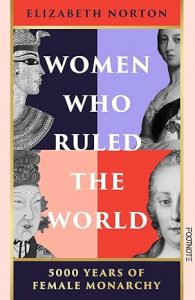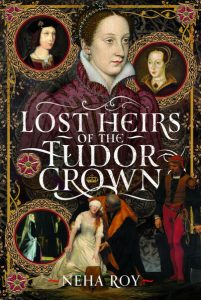Last Tuesday I watched Sarah Gristwood’s fascinating talk about Arbella Stewart. Arbella was the subject of Sarah’s first book, ‘Arbella: England’s Lost Queen.’
Arbella was a great-great grandaughter of Henry VII and after the early deaths of her parents, was raised by her maternal grandmother, Bess of Hardwick.
Sarah described how she discovered Arbella’s story quite by chance when she visited Hardwick Hall and how she was very lucky to come across such a story with genuine political importance, an escape abroad and surviving letters.
Arbella’s letters are extraordinary documents, they are very revealing about James’s court and also Arbella’s character and distress. What Arbella wrote, is what made her story sing for Sarah. There is nothing like holdings a letter that Arbella had shed tears over 400 years ago.
‘I must shape my own coat according to my cloth, but it will not be after the fashion of this world, God willing, but fit for me.’
You could hardly get a clearer statement of identity. Arbella also wrote whilst a prisoner in the tower that
‘I dare die, so I be not guilty of my own death.’
Arbella made a bid for the throne, as Elizabeth I lay dying, by seeking to marry. She was 27 years old and secretly opened negotiations to marry a boy 12 years her junior and had never met. But crucially he was he eldest grandson of Lady Katherine Grey, Lady Jane Grey’s next sister. He was a boy with his own claim to the throne, Edward Seymour.
The plan was discovered and an investigator was sent to Hardwick Hall to question Arbella and her grandmother. When James I, her cousin, inherited the throne, Arbella was brought to court.
The summer of 1603 saw a plot to place her on the throne. It became clear that James was not likely to let Arbella marry, as any children would provide an alternative line of succession.
Early in the spring of 1610, Arbella contracted a secret betrothal to William Seymour, with his own claim to the throne, younger brother of Edward Seymour. This was a deeply political act. They married secretly that summer but it was soon known at court. They were sent to separate prisons, William to the Tower and Arbella was placed under house arrest. After a failed escape attempt, Arbella died in the Tower of London.
Arbella did not get to be Queen of England, nor was she allowed to live long with her husband but she was a woman who made her political mark, left a legacy of letters and inspired one of the great works of English Literature, the Duchess of Malfi.
At the end of the talk, Sarah answered our questions.
My question was ‘How much of a threat was Arbella’s marriage? Do you think people would have accepted a son of William and Arbella instead of the Stuart line of succession?’
Sarah answered, ‘When they escaped, James was hysterical and sent everyone after them. The Lord Admiral suggested letting them go, as did it really matter? The kicker was the religious question. No Protestants wanted to replace James with Arbella, except those who might control her. If Willian and Arbella had converted to Catholicism abroad, Catholics might have supported them and that is where the threat came in.’






































